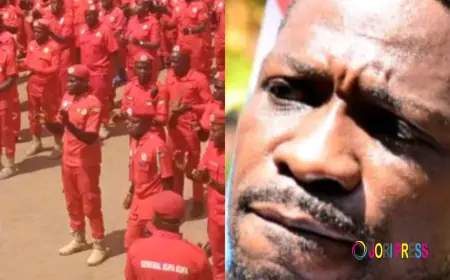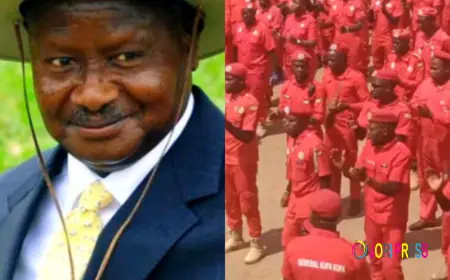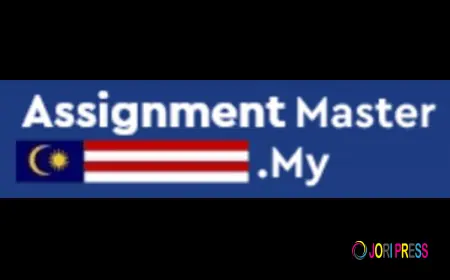Museveni launches Manifesto, promises qualitative leap


Kampala, Uganda | AGENCIES | It was a bright, expectant Monday afternoon in Munyonyo. Speke Resort Convention Centre was aglow in yellow banners, the color of the NRM, fluttering in the breeze. Party officials, supporters, dignitaries and guests streamed in, the air full of chatter and the promise of something big. Uganda stood on the cusp of a fresh chapter: the 2026-2031 term.
At exactly 4:00 p.m., President Yoweri Kaguta Museveni took the podium. Before him lay the NRM’s manifesto, known as the “Kisanja Programme,” a document expected to be part history, part promise — reflecting both what has been achieved and what lies ahead.
His words opened a window into the true theme of the day: “Protecting the Gains as We Make a Qualitative Leap into a High Middle Income Status.” It was a thrust not merely to preserve what the party has done over its decades in power, but to push the country upward, faster, with purpose.
He reminded the crowd that much has been done: Uganda has secured peace and stability, built infrastructure, stretched public service reach, and lifted many out of poverty. But he said that the next five years must not merely be about maintenance; they must be about transformation.
Five major pillars stood out in the manifesto:
- Peace and Security – Museveni said that without security, nothing else matters. The UPDF is ready and strong. He vowed to guard the country against threats, internal and external, and to suppress crime.
- Industrialisation & Job Creation – Uganda must manufacture more, add value locally, make factories hum, and employ people, especially young people who are looking for opportunity.
- Modernisation of Agriculture – Not just small‐scale farming, but more efficient, productive methods, perhaps large scale, modern inputs, better markets.
- Infrastructure Development & Oil/Gas Expansion – Roads, power, connectivity, exploiting natural resources responsibly. An emphasis on underdeveloped sectors and pushing towards the oil & gas potential. (
- Digital Transformation & Trade – Moving Uganda into the digital age; increasing cross‐border trade, being more competitive regionally and internationally.
At times, Museveni looked back — recounting how only 40-plus years of what NRM calls its gains have brought Uganda to this moment: stable government, economic growth, rising access to education and health services.
But he also looked forward — with urgency. The mission is clear: more Ugandans must join what he called the “money economy.” He said roughly a third of Ugandans are still outside it; bringing them in means modern employment, wealth creation, and uplift in living standards.
The ceremony had its moments: prayers, anthems, musical performances. Faces lit by hope and nostalgia. Party faithful hearing once again the familiar call: stability, continuity, preserving what has been gained — yet not being satisfied. The promise of a leap — qualitative, substantial.
Outside, the launch serves as more than just a document unveiling: it is the opening salvo of Museveni’s campaign trail. From Munyonyo and Makindye, the journey will carry him to Luweero — symbolic ground linked to the guerrilla struggle that brought him to power — then to regions across Uganda.
As dusk fell over Munyonyo, yellow lights still hues across the resort, voices rose in song, and the manifesto’s pages closed on its launch — but opened the road ahead. The question now: will these promises become lived reality for millions who place their faith, or hope, in them?
CLICK TO READ FULL MANIFESTO





















































